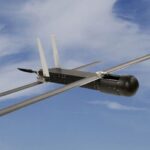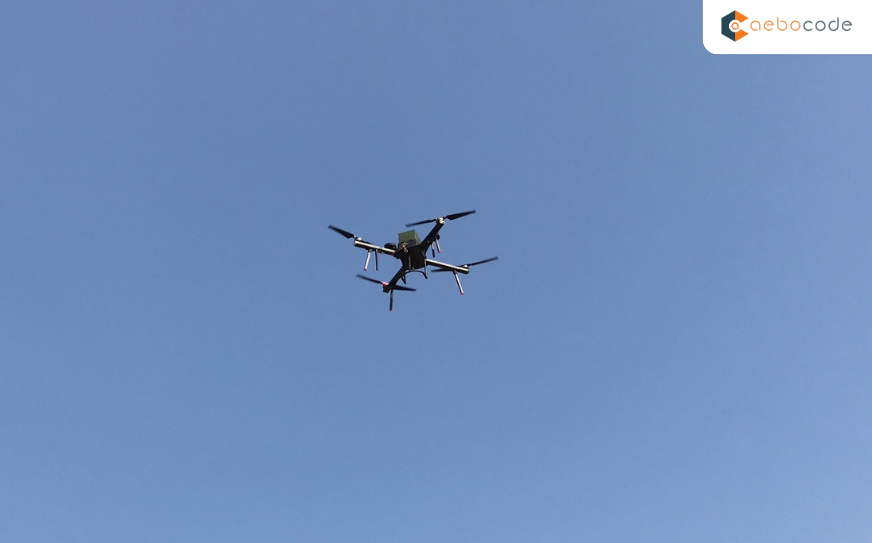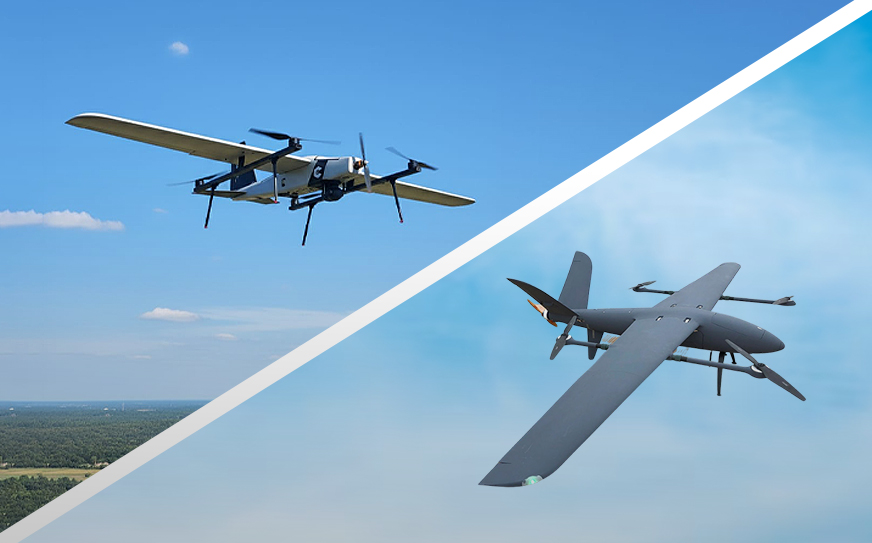
Loitering Munitions vs. Drones: Differentiating Differences and How They Impact Warfare
May 20, 2025
Kids Drone Kits: What’s Inside the Box & How It Operates
May 29, 2025Top Drone Applications in India in 2025: Advancing Technology in Surveillance, Delivery, and Mapping
India’s drone sector has seen exponential growth in the last few years. As we step into 2025, the scenario has changed from constrained surveillance applications to an ecosystem where drone applications are integrating into every sector — from defense and agriculture to logistics, mapping, and emergency services. Moreover, advancements in technology, coupled with supportive government policies, have paved the way for drones to become indispensable tools across industries. As a result, India is emerging as a global hub for innovative and large-scale drone applications.
In this blog, we highlight the best applications of drones in India in 2025, showing how they’re defining the future of the country.
1. Defense and Border Security
India’s extensive and difficult borders require advance surveillance systems. By 2025, drones have emerged as a pillar of national security strategy. Unmanned Aerial Vehicles (UAVs) are now being used extensively by the Indian Army, Navy, and Air Force for critical drone applications such as border surveillance, reconnaissance missions, real-time intelligence gathering, and threat detection. Furthermore, these drone applications have enhanced situational awareness and operational readiness, enabling faster and more informed decision-making in defense operations. As a result, drones play a vital role in safeguarding the nation’s frontiers.
Surveillance and reconnaissance of sensitive border sectors
Loitering munitions and tactical strike UAVs
Night-time and thermal imagery sorties in areas such as Ladakh and Poonch
Swarm UAV deployment for cutting-edge battlefield tactics
Also read : Indian Defense Forces are Investing in Surveillance Drones
2. Precision Farming and Agriculture
Indian agriculture is experiencing a tech revolution, and drones are leading the way. In 2025, farmers in states such as Punjab, Haryana, and Maharashtra use drones for:
Monitoring crop health with NDVI and multispectral sensors
Aerial spraying of pesticides and fertilizers — eliminating labor and boosting accuracy
Seeding seeds by drone automated systems
Yield estimation and early detection of pest infections
Digital Agriculture Missions’ government subsidy and training initiatives have brought drones within the reach of small and medium farmers.
3. Infrastructure Inspection and Smart Cities
With India’s emphasis on smart cities and modern infrastructure, drones are a game-changer in real-time inspection and monitoring. In 2025, drones are seen being used extensively in
Bridge and highway inspections for maintenance and damage evaluation
Monitoring of railway lines to prevent interruptions and maintain safety
Mapping of construction sites to enhance project planning and monitoring of progress
Surveillance and traffic management in smart cities
4. Emergency Response and Disaster Management
India experiences regular natural disasters — floods, cyclones, earthquakes — and emergency response is a vital use of drones.
Drones are used in disaster zones in 2025 for:
Search and rescue missions with thermal imaging and real-time footage
Delivery of relief materials to inaccessible or isolated areas
Damage inspection for faster insurance claims and government relief
Real-time communication relay when network connectivity is lost
Government institutions such as NDRF (National Disaster Response Force) and NGOs also depend more and more on drone alliances for quick and secure responses. To start with, drones offer real-time aerial views that enhance situational awareness during natural disasters. Additionally, they enable rapid assessment of affected areas, allowing for more targeted rescue and relief operations. Furthermore, collaboration with drone service providers ensures access to specialized technology and trained operators. As a result, these alliances significantly improve the efficiency and safety of disaster response efforts across the country.
Also read : A Guide to Drone Types
5. Police and Crowd Control
In 2025, police forces at the state level throughout India utilize drones as an integral part of their daily activities:
Surveillance of protests, festivals, and political rallies
Management of traffic through live video feed
Monitoring criminal activities within cities and rural regions
Observing illegal mining, deforestation, and encroachment
6. Delivery and Logistics
Drone-based delivery systems, while yet in infancy stages, are picking up steam in India in 2025. To begin with, they are being tested for last-mile delivery of medical supplies, groceries, and essential goods in remote areas. Moreover, successful pilot programs have encouraged both government and private sectors to invest in drone logistics. In addition, improvements in drone technology and supportive policy frameworks have accelerated their adoption. As a result, drone-based deliveries are steadily becoming a promising solution for faster, more efficient distribution across the country. Logistics giants and startups are testing drone delivery for a variety of drone applications, including urgent healthcare shipments, e-commerce parcels, and time-sensitive cargo, paving the way for a more connected and accessible supply chain.
Medical supplies and vaccines to rural and tribal pockets
E-commerce parcels in Tier 2 and Tier 3 towns
Urgent items such as blood samples or emergency kits
Pilot projects in states such as Telangana and Karnataka have led to larger-scale drone logistics networks, backed by Drone Corridors established by DGCA. Initially, these projects began as small-scale experiments to test the feasibility of drone-based deliveries. Subsequently, their success demonstrated the potential for broader application across various sectors. Moreover, the establishment of dedicated Drone Corridors by the DGCA has provided the necessary regulatory framework and infrastructure support. As a result, drone logistics in India is rapidly evolving into a scalable and reliable transportation solution.
7. Land Surveying and Mapping
India’s large-scale infrastructure development, real estate expansion, and government digitization initiatives such as SVAMITVA (Survey of Villages Abadi and Mapping with Improvised Technology in Village Areas) depend significantly on drone mapping. To start with, drones offer high-resolution aerial imagery that accelerates land surveys and project planning. Furthermore, they enhance accuracy in mapping, reducing manual errors and increasing efficiency. In addition, initiatives like SVAMITVA benefit from drone technology by enabling transparent property records and efficient resource allocation. As a result, drone mapping has become a crucial tool in driving India’s development and digital governance forward.
Applications of drones include:
Topographical surveys and contour mapping
3D land records creation for village settlements
Pipeline and utility line inspection
Mining area monitoring for regulatory compliance
Aebocode’s mapping drones are equipped with LiDAR and photogrammetry systems, offering centimeter-level accuracy and faster data processing.
8. Environmental Monitoring and Wildlife Conservation
With growing awareness of environmental challenges, drones are now being used for ecological research and conservation. In 2025, drone applications include:
Monitoring forest cover and wildlife movement
Tracking endangered species with thermal and motion sensors
Monitoring illegal logging and poaching operations
Air and water pollution monitoring with onboard sensors
Government agencies and wildlife NGOs employ drones for real-time decision-making in forest reserves such as Kaziranga, Jim Corbett, and Sundarbans. To begin with, drones provide instant aerial surveillance, which helps monitor wildlife movement and detect illegal activities. Moreover, they assist in tracking endangered species and assessing habitat conditions with greater accuracy. In addition, drones enable faster response times during emergencies such as forest fires or poaching incidents. As a result, these organizations can make more informed and timely decisions, significantly enhancing conservation efforts across these critical ecosystems.
Also read : The Complete 2025 Guide
9. Media, Film, and Events
The Indian media and entertainment sector has adopted drones in 2025 like never before. To begin with, drones are now widely used for capturing breathtaking aerial shots in films, television shows, and live events. Furthermore, they have revolutionized content creation by enabling high-quality visuals at lower production costs. In addition, live broadcasting and event coverage have become more dynamic and immersive with drone technology. Consequently, the industry has seen a surge in creative storytelling and viewer engagement, setting new standards for visual media in India. Drone cinematography is now the norm in:
Weddings and corporate events
Cinematic film shoots with dramatic aerial vistas
Live sports broadcasting
Tourism promotional videos for resorts and destinations
Regulatory standards have grown more accommodative, permitting certified operators to fly in city airspace with permission.
10. Education and Training
The drone phenomenon has given rise to an enormous need for skilled professionals. In 2025, drones are also employed as training devices in various fields. For instance, in addition to their use in surveillance and delivery, they are increasingly utilized in education and skill development. Moreover, industries such as agriculture, defense, and filmmaking integrate drone training to enhance workforce readiness. As a result, drones are not just tools but also platforms for learning, simulation, and hands-on experience.
Engineering colleges and aviation institutes
DGCA-approved drone pilot training courses
Skill development centers in rural India encouraging drone entrepreneurship
Aebocode empowers drone education by providing training modules, drone simulators, and workshops for students and professionals.
Conclusion
From defense to disaster relief, agriculture to urban planning, drones in India are no longer a future reality — they are an existing necessity. With the country planning to become a global drone hub under the “Make in India” initiative, Aebocode Technologies remains at the center of innovation.
We are honored to be a part of this aerial revolution, bringing smarter, safer, and more effective drones to every sector that we impact.
Interested in learning how drones can revolutionize your operations? Contact Aebocode Technologies today.






